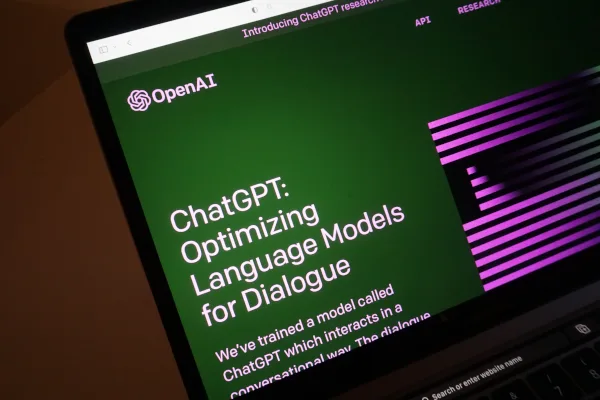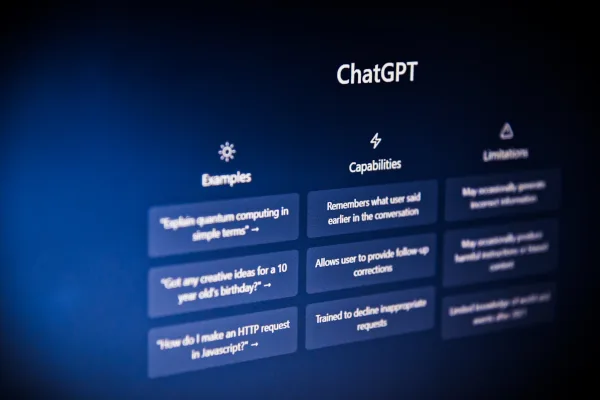ChatGPT is a language model that has gained significant attention in the recent past due to its ability to generate human-like responses to text-based prompts. Or, said differently, you can, for free, ask a machine any question you wish and the program will respond!
Language models like ChatGPT are critical components of modern technology, powering everything from virtual assistants to chatbots to social media algorithms. In this article, we’ll take a deeper look into what ChatGPT is, how it works, and its potential applications and limitations.
- What is ChatGPT?
- History of ChatGPT
- Applications of ChatGPT
- Limitations of ChatGPT
- Comparison of ChatGPT with other language models
- Can ChatGPT replace human communication?
- Measuring the accuracy of ChatGPT
- Conclusion
What is ChatGPT?
ChatGPT stands for “Generative Pre-trained Transformer” and is a type of language model that uses deep learning to generate human-like responses to text-based prompts. Language models like ChatGPT are trained on large datasets of text and use this data to generate new text based on a given prompt.
The basic idea behind language models is to predict the likelihood of a word or sequence of words occurring based on the context of the text. For example, if the prompt is “I went to the store and bought some”, a language model might predict “groceries” or “food” as the next word in the sequence. ChatGPT is a particularly powerful language model because it has been pre-trained on a massive amount of text data, making it capable of generating highly coherent and contextually appropriate responses.
Technical details about ChatGPT’s architecture and training process can be quite complex, but at a high level, it consists of a multi-layer neural network that processes text in a hierarchical fashion, from individual words to entire sentences. The model is trained on massive amounts of text data using a technique called unsupervised learning, which involves feeding the model a vast amount of text data without any specific task or target. Over time, the model learns to generate human-like responses based on patterns and relationships in the data.
History of ChatGPT
ChatGPT was developed by OpenAI, an artificial intelligence research organization founded in 2015 by tech luminaries such as Elon Musk and Sam Altman. The first version of ChatGPT, known as GPT-1, was released in 2018, followed by GPT-2 in 2019 and GPT-3 in 2020. Each iteration of the model has been increasingly powerful and capable, with GPT-3 widely regarded as one of the most advanced language models ever created.
ChatGPT has had a significant impact on the field of natural language processing (NLP), which involves the development of algorithms and models that can understand and generate human language. Prior to the development of ChatGPT, language models were limited in their ability to generate coherent and contextually appropriate responses. ChatGPT represents a significant breakthrough in this area, opening up new possibilities for how we interact with machines.

Applications of ChatGPT
The potential applications of ChatGPT are vast, ranging from virtual assistants to customer service chatbots to social media algorithms. ChatGPT can be used to generate responses to customer inquiries, generate personalized recommendations based on user data, and even assist with writing tasks such as composing emails or reports.
One of the most promising applications of ChatGPT is in the field of natural language generation, which involves using language models to create human-like text. For example, ChatGPT could be used to generate news articles, marketing copy, or even entire novels. This has the potential to transform the way we consume and create content, as well as opening up new opportunities for writers and content creators.
Limitations of ChatGPT
While ChatGPT is an impressive achievement, it is not without its limitations. One of the most significant challenges facing language models like ChatGPT is their inability to understand the meaning of language in the same way that humans do. ChatGPT is excellent at generating text that is contextually appropriate and grammatically correct, but it lacks a true understanding of the meaning and implications of the text it generates. This can lead to the generation of biased or inappropriate content, as well as potential ethical concerns around the use of language models in certain contexts.
Another limitation of ChatGPT is its dependence on large amounts of data for training. While this allows the model to generate highly coherent and contextually appropriate responses, it also means that the model may struggle with generating responses to prompts outside of its training data. This can be particularly problematic in the case of rare or niche topics, where the model may not have sufficient data to generate accurate responses.

Comparison of ChatGPT with other language models
ChatGPT is not the only language model out there, and there are several other models that are used in various applications. Some of the most popular models include BERT, ELMo, and GPT-2, which are all capable of generating human-like responses to text-based prompts.
While these models share some similarities with ChatGPT, there are also significant differences in their architecture, training process, and capabilities. For example, BERT is known for its ability to understand the meaning of individual words in context, while ELMo is notable for its ability to generate responses that incorporate different levels of linguistic complexity.
Ultimately, the choice of which language model to use depends on the specific application and the goals of the developer. ChatGPT is a particularly powerful language model for tasks such as natural language generation and chatbot development, but it may not be the best choice for all applications.
Can ChatGPT replace human communication?
One of the most significant questions surrounding ChatGPT is whether or not it can replace human communication entirely. While ChatGPT is capable of generating highly coherent and contextually appropriate responses, it lacks the nuance and depth of understanding that humans possess when communicating with one another.
Additionally, there are potential ethical concerns around the use of language models in contexts such as customer service or journalism, where human interaction is often seen as essential. While ChatGPT has the potential to transform the way we interact with machines, it is unlikely to replace human communication entirely.

Measuring the accuracy of ChatGPT
The accuracy of language models like ChatGPT is typically measured using a variety of metrics, including perplexity, which measures how well the model predicts the likelihood of a given sequence of words. Other metrics include BLEU (bilingual evaluation understudy) score and ROUGE (recall-oriented understudy for gisting evaluation) score, which measure how well the generated text matches a given reference text.
The accuracy of ChatGPT can be affected by a variety of factors, including the size and quality of the training data, the complexity of the language being generated, and the specific task or application for which the model is being used.
Conclusion
ChatGPT is a powerful language model that has the potential to transform the way we interact with machines and generate human-like text. While there are limitations and challenges associated with its use, ChatGPT represents a significant breakthrough in the field of natural language processing and has opened up new possibilities for how we communicate and create content. As the field of NLP continues to evolve, it will be fascinating to see how ChatGPT and other language models continue to develop and shape the future of technology.
